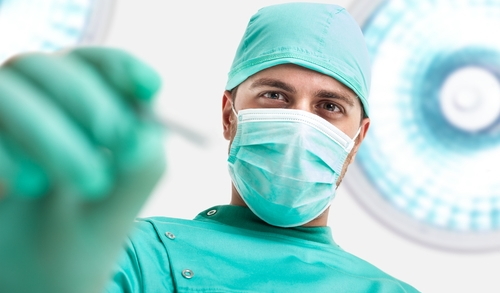Cryosurgery is a medical procedure that uses intense cold to destroy cancerous cells. The technique, known also as cryotherapy or cryoablation, can treat men who have early-stage prostate cancer that is localized to the prostate. It is only effective in small regions, and therefore is not used to treat prostate cancer that has metastasized beyond the gland.
While the procedure is less invasive, has a shorter recovery time, and may have fewer side effects when compared to other cancer treatments, it is less established and its long-term outcomes are unknown. Still, cryosurgery is a viable option, especially for men who can't have radiation therapy or surgery due to their age or additional medical problems.
What is Cryosurgery?
Liquid nitrogen (or argon gas) is used to create extremely cold temperatures that can kill abnormal tissues. As the liquid gas flows through a hollow instrument—called a cryoprobe—ice crystals form around the probe.
When the probe makes contact with the tumor, the cancer cells are frozen and destroyed. In addition, connective tissue and small blood vessels around the tumor are damaged. This cuts off the blood supply that the tumor needs to continue growing.
How is Cryosurgery for Prostate Cancer Performed?
Cryosurgery for prostate cancer is done under either general or spinal anesthesia. Before the procedure, an ultrasound probe is placed in the rectum to give the surgeon a visual of the prostate. This allows the doctor to monitor the prostate and nearby organs/tissues during surgery.
Several probes may be placed in the prostate at locations determined before the procedure. These are positioned to avoid the area of the urethra, the tube which passes through the prostate as it carries urine out of the body from the bladder.
In addition, a warming catheter is inserted into the urethra to keep the urethra warm throughout the procedure. Other probes may be placed in and around the prostate gland in order to monitor the temperature and prevent damage to noncancerous tissue.
Cryosurgery takes under two hours and is done in two freezing cycles. In between these cycles, the prostate is allowed to warm, either on its own or with the aid of a warmer gas (such as helium or argon) moving through the probe. After the second thaw, a catheter is inserted into the bladder to help with urination during the recovery period. This tube may be inserted through the urethra, or through a small cut (incision) in the lower belly. The catheter will remain in place for several days after surgery.
Recovery After Cryosurgery for Prostate Cancer
Cryosurgery is generally done as an outpatient procedure, which means the patient will be able to go home that day. The most common side effects of cryosurgery include:
- This goes away after several days or a few weeks.
- Inability to urinate. The catheter will be removed—usually within 5 to 15 days—when the man can urinate on his own. Recovery may take longer for some men.
- Infection or irritation around the catheter. Oral antibiotics and medications may be given to reduce the risk of these.
- Less common side-effects. Such as scrotal swelling, numbness at the tip of the penis, painful or burning during urination, urgent or frequent urination, urination of small pieces of tissue.
Most men have little pain after the procedure, with symptoms mainly caused by the placement of the catheter. In general, men return to their normal activities within a week.
A prostate-specific antigen (PSA) test is usually done three months after surgery to look for signs of prostate cancer. A biopsy of the prostate may also be done at some point to determine if cancer cells are still present.
Advantages of Cryosurgery for Prostate Cancer
Cryosurgery offers several advantages over other prostate cancer treatments, including:
- Less invasive, with only a small incision for inserting the cryoprobe
- Less pain and bleeding after surgery
- Less expensive
- Shorter recovery time and hospital stay (or no hospital stay)
- Can sometimes be done with local anesthesia
- Focused procedure, which allows surgeons to avoid damaging nearby tissue
- Works along with other treatments, such as hormone therapy, radiation, chemotherapy, and prostatectomy
- May be done on cancers that are considered inoperable
Disadvantages of Cryosurgery for Prostate Cancer
The main disadvantage of cryosurgery for prostate cancer is that its long-term benefits are unknown. During the procedure, surgeons freeze tumors that they can see with imaging tests (like ultrasound). Very small sections of tumor may not be visible on those images, and could be missed during the surgery. As a result, the tumor can grow, requiring further treatment.
Outcomes After Cryosurgery
The outcome—or prognosis—after cryosurgery for prostate cancer depends upon several factors, such as the size of the tumor, how far advanced the cancer was at the time of the procedure, and whether other treatments were done before cryosurgery. The technique used can also affect the outcome.
In several studies, between seven and 25 percent of men treated with cryosurgery had signs of prostate cancer cells three to 24 months after the procedure. Other research has found signs of cancer in the outer layer of the prostate (epithelium) in up to 71 percent of men treated with cryosurgery.
References
Ward JF, Jones JS. (2012). Focal cryotherapy for localized prostate cancer: a report from the national Cryo On-Line Database (COLD) Registry. BJU Int 109(11):1648-54.
Chin JL, Touma N, Pautler SE, et al. (2003) Serial histopathology results of salvage cryoablation for prostate cancer after radiation failure. J Urol 170(4 Pt 1):1199-202.
Wake RW, Hollabaugh RS Jr, Bond KH. (1996). Cryosurgical ablation of the prostate for localized adenocarcinoma: a preliminary experience. J Urol. 55(5):1663-6.
Bahn DK, Lee F, Solomon MH, et al. (1995). Prostate cancer: US-guided percutaneous cryoablation. Work in progress. Radiology 194(2):551-6.


